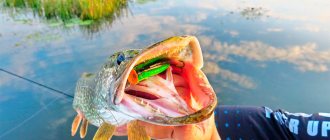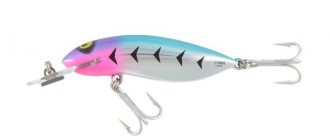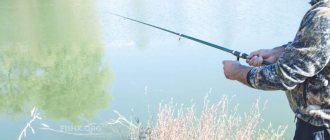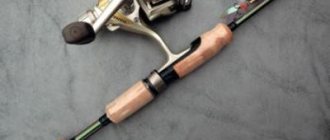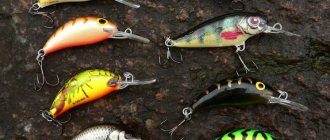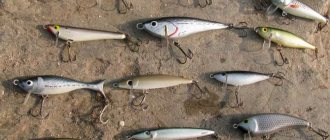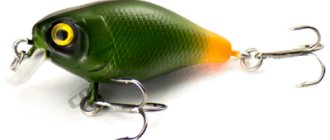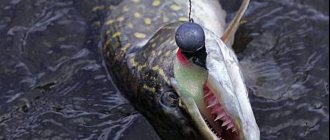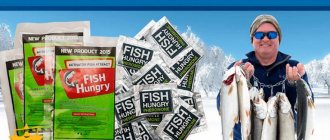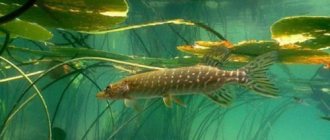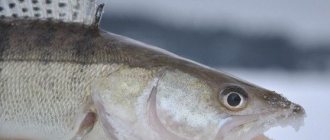So, the task of any beginning spinning angler is to collect his own set of the most catchy baits, among which wobblers have a special place. To do this, you need to understand what types of wobblers exist, what fishing features their choice depends on, and so on.
Deciding which wobblers are best for pike in the spring does not mean just reading the list of models. It is important to select exactly those baits that are best suited for this time of year, as well as for different parts of the reservoir: for their depth and degree of transparency. For example, in the spring, pike spend a lot of time in shallow water areas and therefore, for this case, baits with a depth of up to two meters are used.
Types of wobblers: their similarities and differences
Externally, the wobblers look very similar to each other. However, their behavior when leashed is still different. And different fishing conditions require different bait action. They may differ from each other in body shape, buoyancy, color, etc. They can be with or without a blade.
Bladeless wobblers can be shallow-water (submerged to a depth of up to 1 m), deep-water (from 2.5 m and deeper), medium-depth (from 1.5 m to 2 m: rattlin, darter, jerkbait), as well as surface (floating on bait surfaces: popper, chagger, walker, crawler). Representatives of wobblers with a blade are called: minow, shad, crank, fad.
When choosing spring wobblers for pike, you must also take into account their ability to float on the water. Depending on their buoyancy, baits can be floating, sinking and suspended wobblers (neutral buoyancy). The latter have the properties of both sinking and floating wobblers. Their characteristic feature is that they sink very slowly and emerge just as slowly. The condition of the suspenders is influenced by various factors, such as the weight of the sinker, the length of the leash, water temperature, etc. Some manufacturers indicate on their baits the water temperature range at which wobblers can hang for a long time.
Wobbler colors
The toothy predator does not have any special preferences regarding the color of the wobbler, the main thing is that it can notice it in the water. When choosing the color scheme of a wobbler for pike in the spring, it is necessary to take into account the characteristics of the reservoir: water transparency, the presence of vegetation, snags, as well as weather conditions. For example, on a cloudy day or during rain it is better to use golden-colored wobblers, and in clear sunny weather in clear water - silver models. When going fishing early in the morning, it is not always possible to predict what the weather will be like during the day. Therefore, every spinning player should have bait of various colors in his arsenal, and you never know on which body of water you can catch pike with wobblers in the spring.
My wobblers for pike in spring
Fishing locations: the shores of the Boguchansky Reservoir. The depths are different. You can run into flooded shallow areas and a relief bottom, where a frequent drop of 5-6 meters will not be a curiosity. Coastal debris, flooded bushes and forest remaining under water after cutting down, unmelted ice, floating rubbish. This is what creates difficulty for the spinning angler and attracts the fish population. When assembling a set of baits, everything needs to be taken into account. Therefore, I will characterize wobblers by their diving depth and behavior during retrieval.
I repeat that in nature there is no distinction between wobblers (spinners and other lures) specifically for pike. It is completely normal if a perch or other predator living in your pond is caught as a trophy.
I mainly use minnows that have a positive degree of buoyancy. The main size is from 100 millimeters. I consider the predisposition of spring pike to small-sized baits to be reasonable only if we take into account reservoirs.
I prefer acidic color. And that’s only because it’s convenient for me to monitor the behavior of the bait. The objectivity of the statement that pike reacts better to one color or another is still being tested. I have data on various reservoirs where the predator prefers either a nondescript “minnow” color or an aggressive “acid” color. But I still don’t dare say 100% that the reason is the color. Most likely my approach in presenting the bait is wrong. Fishing is a constant learning experience .
If there is no “acid”, then there is nothing to worry about.
So. Which spring wobblers for pike will definitely end up in my travel boxes.
Wobblers with immersion depth from 0.5 to 1 meter
Salmo Skinner 10F
Shallow water bait. It twitches quite well, but I animate it with simple uniformity. It has its own game, which is enough to attract and provoke an attack. It floats up quite quickly, but this is not a hindrance.
Pontoon 21 Agarron 95 and 110 SF SR
Agarosha in size 95 is a wobbler that can be safely recommended to a beginner to get acquainted with this type of bait. It does not require a special rod, in principle, like its older brother. The only difference is in behavior. As expected, 110 has a tendency to be imposing.
You can lead with an aggressive twitch; on short jerks, the tip of the spinning rod goes slightly wider. Both versions float slowly even when using number 2 string as a leader.
Renegade Pike Death 115SP
I have only good things to say about this catchy budget wobbler. The catch includes perch and pike. For shallow water areas it is simply irreplaceable. It doesn't go deep. If visibility is good, I adjust the movement of the bait during the retrieve.
Pontoon 21 Zany Zag 100DW
Surface wob, designed for active fish. Despite the cold spring water, I recommend having it in a box and be sure to use it at shallow depths.
Wobblers with a dive of 1 to 2 meters
Tsuribito Dead Minnow 110 SP
Not a fast wob. With an imposing game compared to its smaller brother. This is what should be offered to spring pike.
TsuYoki Draga 130 F
Chinese replica of the Deps balisong 130. I took it out of curiosity. He showed himself quite well. Having picked up the leash, I achieve a slow ascent during a pause.
Evergreen Side Step SF
Wobbler for very lethargic pike and perch. If desired, it is carried out under the very surface. It reaches the specified depth of one and a half meters confidently. Twitch is not harsh with long pauses. With a leash it floats up very slowly. If a predator is interested, she will definitely take it. Not on the first, but on the second or third wiring.
Evergreen Mo-Do Custom Jerkbait Faith 115
A wobbler is a song if you pick up the key. Long cast. It quickly reaches the depth specified by the manufacturer of 2 meters. You need fast or at least medium-fast spinning. The wiring needs to be selected. When I got acquainted with this thread, I read that any animation is possible, even down to banal uniformity. In fact, it turned out that a series of weak end twitches with a pause, right up to the ascent, is the most optimal wiring. With this animation, the wobbler moves in a “herringbone” pattern, and when paused, it slowly ascends. If he drowns, experiment with a leash. I use 15 centimeters of fluor.
Jackall Mag Squad 115 and 128
For many anglers it has become a pike detector. With average depth, noise effect and ascent speed, it has one real characteristic - catchability. Last year, 2021, he became one of the pike leaders. Both sizes work, but I gravitate towards 128.
The model forgives any twitching. But I’m not a fan of the “pull out the fastening loop” technique, so a leisurely twitch with pauses. The number of jerks and the duration of pauses are selected according to location.
Open from spring to autumn.
Pontoon 21 Cablista 105F-SMR
Pontoon 21 Cablista above, below Jackson Katana
I once considered the version in size 90 to be optimal, but after purchasing 105 and, a little later, 125, I realized that I was too hasty in my judgment. A very successful model.
The game is wide and sweeping. When surfacing, it swings its sides. Pike like it. Yes, me too.
Lucky Craft Slender Pointer MR 112 and 127
Test wobblers have every right to be in the permanent composition of the pike catcher.
Choosing a surface wobbler depending on fishing tactics
Even if you collect all the best types of wobblers, this does not mean that the catch will be excellent. Depending on the fishing tactics used, you need to choose the right model. The greatest demand among anglers is for surface wobblers for spring pike – poppers. Well, how effectively they will work depends on the fisherman. In order for the pike to notice and be carried away by the popper, it must make specific sounds, gurgling in the water. To do this you need to use jerk wiring. Walkers work better during trolling, but here you will need some experience and skills to lure a pike. But a jerkbait can simply be pulled evenly across the surface of the water. During the movement of this bait, impressive vibrations of water are created, which with their noise attract the toothy predator.
Pike fishing in autumn
In autumn, pike becomes especially active, one might even say aggressive. She needs to store up fat for the winter and this makes her rush at everything that floats past. The golden time of using wobblers. There is no particular difference between summer and autumn wobblers for pike. Simply, taking into account the fact that the fry are growing, you need to use large wobblers, giving preference to neutral and deep species. And don't forget about color. For clear water, it is better to use neutral colors. Muddy water requires bright wobblers. The absence of sun calls for golden shades. And in order not to lose both prey and your favorite wobbler, the leash must be made of durable material.
So, guys, save on beer and stock up on wobblers to have the opportunity, looking at the predatory grin of the pike, to say to it - “Yeah, gotcha, beauty!”
Technique for wiring sinking wobblers
Sinking wobblers for catching pike in the spring perform well in reservoirs with a pronounced current. They start playing as soon as they dive into the water. The behavior of the pike may depend on the speed of the retrieve. If the retrieval is quite slow, the predator can pursue the intended prey to the very bottom and begin to attack the moment the wobbler falls. A quick retrieve can provoke the pike into an instant bite. The game can be even, stepped or with effective jerks. This bait can be used for fishing even at the very bottom.
Choose wobblers based on our advice and go fishing. Happy biting!
The best wobblers for pike
A wobbler is rightfully considered one of the best baits for pike hunting.
Hundreds, if not thousands, of models of this catchy bait have been developed. Most wobblers are designed for catching not only pike, but also other freshwater predators. An angler who is going to catch pike needs to know whether a particular wobbler is intended for catching this predator and what characteristics such wobblers have. Before buying bait, you need to know the 10 best wobblers for pike in order to select their analogues.
Top 10 best wobblers for catching pike in spring
Active pike can be easily caught with any bait. But for passive fish, just emerging from hibernation, it is somewhat more difficult to choose a suitable wobbler. Minnow type baits have proven themselves best in this process.
The top ten best wobblers for spring pike fishing include:
Ima Flit 120
A suspender bait with a narrow oblong shape. Inside it are metal balls that make the bait move in the water, as if reviving it.
Megabass Vision 110
This slow-rising model also has two tungsten balls built into it, which allow for longer casts and make the lure play when retrieved.
Megabass Flap Slap
The fish looks like a small crucian carp. Suitable for catching pike from the shore with slow retrieve. For the spring period, it is recommended to make pauses alternating with postings longer.
Evergreen Sledge Escarda
Designed for smooth wiring without pauses. Fishing takes place at approximately a meter depth. For long casts there is a special weight.
Megabass X120
A bait similar to a small minnow. Wiring should be done in jerks, taking 2-second breaks between them.
About
